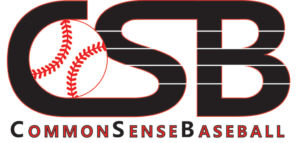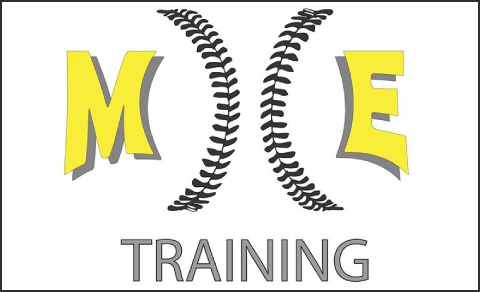The Do’s and Don’ts: What the Research Says
Oh boy, here we go again with all the weighted baseball stuff…
But, seriously, are you educated yet? Probably not. There is so much more research needed to fully understand everything there is about weighted baseballs.
So far, here is some of what we do know in a quick summary:

Throwing Velocity
Using an array of weighted baseballs (4-12oz.) can lead to an increase in throwing velocity.
One study [1] found that using over-weighted baseballs as a warm up greatly improved both throwing velocity and accuracy.
These results are great, but they lack ecological validity (carry-over effect). Will a pitcher ever warm-up with a non-regulation ball between innings? Probably not.
Instead of always looking for the “positive” results in research, I like to look at the “negative” results because it forces me to really understand why the researchers came up with certain results.
One study [3] tried to implement another weighted baseball warmup to see if there could be an increase in throwing velocity and accuracy. At the conclusion of the study, the researchers did NOT see any significant difference in throwing velocity between the experimental and control groups.
Based on these results, it immediately tells me that there might be certain populations that won’t really benefit from throwing weighted baseballs. There is a certain criteria that must be taken into account before you choose to use weighted baseballs.
According to the research, it seems that the most optimal range for progressively increasing intensity is 4-6 ounces. In a multitude of studies by Coop DeRenne [4-5], increasing by 0.25 ounces per week has shown to increase throwing velocity by 6%.
If you plan on implementing a weighted baseball program, the suggested ratio of weighted (over- and under-weighted) baseballs to regulation baseballs is 2:1 [6].

To become a Black Diamond call 631-942-2542
Throwing Mechanics
Heavier baseballs increase the amount of external rotation of the throwing arm in the arm cocking position, as well as the amount of internal rotation force on the throwing shoulder [2].

More external rotation in this position puts an even greater stretch on the inside of the ligaments inside the medial elbow (a place you do not want to feel pain).
However, the same study by Fleisig and others [2] showed that pitchers can use weighted baseballs between 4-7 ounces and NOT see any changes in throwing mechanics when thrown off a mound.
Baseballs that are significantly greater (14-oz.) than regulation baseballs (5-oz.) should NOT be used for enhancing throwing mechanics, but rather developing arm strength [2].

Arm Stress
Under-loaded (less than 5-oz.) baseballs produce great arm velocities, but also create the greatest amount of arm stress [2].
Slightly over-loaded baseballs (7-oz.) created less arm stress than a normal baseball (5-oz.) when thrown on flat-ground. This sensation may change when thrown from a mound with high-intent. However, throwing mechanics were slightly altered [2].
As weighted baseball mass increases, the amount of elbow and shoulder joint torques decrease, as well as ball velocity [2].
A recent study done by Mike Reinold and ASMI was the first to show a longitudinal effect on a weighted baseball program. Some of the findings did not agree with previous research.
In Mike Reinold and ASMI’s study, they found that arm strength and arm speed did NOT go up. What did go up was total range of motion in the throwing shoulder. Interesting, huh?
Of the experimental group (weighted baseball throwing), 25% suffered from an injury the next Spring or Summer.

So far, here is what we DO NOT know:

Throwing Volume
I think you can see a common theme here with a lot of these articles. Most of us think that if “x” amount is good, then “X” amount must be even better. As we know, this is not always the case. There is always a minimal effect dose that needs to be considered, and not just with throwing weighted baseballs.
For example, we have no idea how many throws, how many days per week, and when during the competitive year are effective in increasing throwing velocity.
Rather than doing too much at once and finding out when you’ll get hurt, SLOWLY ramp up. Like everyone having a maximal-recoverable volume from resistance training, the same applies to throwing a baseball (and a weighted one as well).
A stress response is needed for a positive adaptation to occur. Like resistance training, the body needs progressive overload to see increases in strength and muscle growth.
Like throwing, stress on the arm is needed for a positive adaptation to occur. But, keep in mind, everyone has a specific maximal recoverable volume.
Future research is also needed to understand the long-lasting effects that weighted baseballs have on throwing velocity. I think it will take us a long time to distinguish this thought.

Long-Term Shoulder Health
In some cases, although you have suddenly increased throwing velocity with a weighted baseball, you may be further damaging the capsule of your throwing shoulder.
Rather, the appropriate concept to consider is progression. A rather huge spike in throwing velocity, during the short-term time frame, may be more harmful than beneficial.
If you want to increase the longevity of your throwing arm, DO NOT have a microscopic view of the throwing motion. There are other ways that you can increase throwing velocity without the expense of adding volume to your arm.
In a review by Rafael Escamilla and others [6], they state that more studies are needed in order to understand the long-term effects that throwing weighted baseballs have on the throwing shoulder.

4-Ways to Increase Throwing Velocity (from Mike Reinold)
- Age and Maturity – if you want to throw harder, keep playing. Your throwing velocity will naturally go up once you are physically mature.
- Get stronger – MASS equals GAS. This is both total mass and lean mass. Being able to display a good amount of lower body strength, rotator cuff strength, as well as expressing these variables in a powerful manner, will allow you to throw harder.
- Take care of your arm – RECOVERY is such an undervalued aspect to performance. Maintaining arm strength and endurance will go a long way.
- Throwing mechanics – being able to dissociate your hips from your upper torso develops the elastic sling in your anterior core.
HERE is a link to the 5-Minute thesis I had to do for my Senior Seminar class at the University of Tampa.
Keep throwing,
Jarad Vollkommer, CSCS




